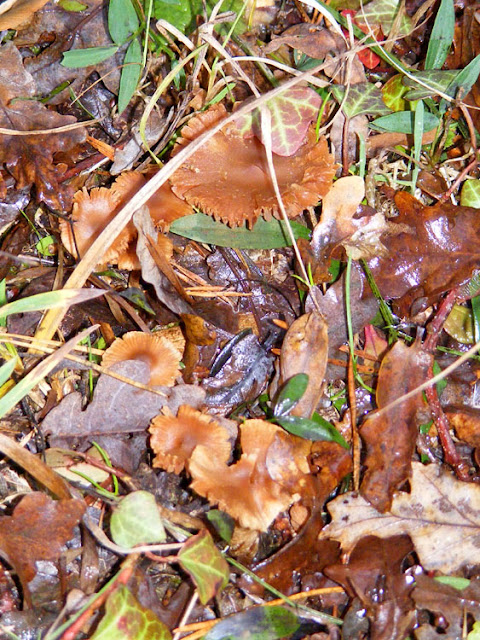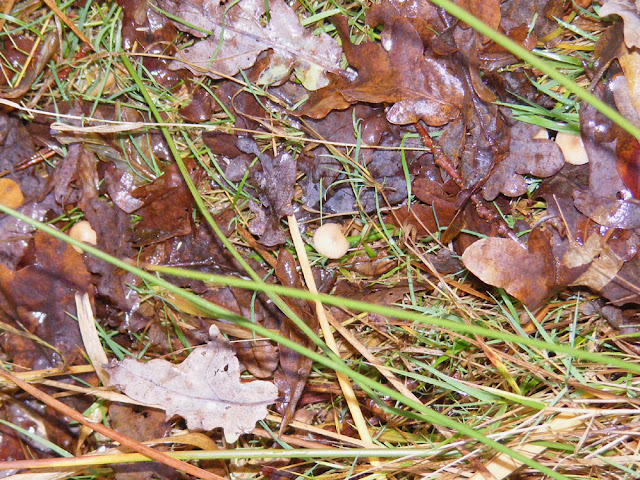This is a reworking of a post from November/December 2016.
*****************************************
In November 2016 I participated in a fungi foray in the Forest of Preuilly. We didn't find much, but we did find a number of species with distinctive scents
 |
| Devils Fingers Clathrus archeri (Fr. Anthrus d'Archer). |
This species, introduced from Australia in the early 20th century, has colonised the forest and is easily found by its stench of rotting meat. Sometimes you can smell it while standing nearby, but usually its pong only impacts when you get down on hands and knees to photograph it.
 |
| A Webcap Cortinarius sp. |
This nondescript little webcap had a light but definite geranium scent.
 |
| Marasmus scorodonius (Fr. Marasme alliace). |
Another nondescript little toadstool, and this one really packs a punch. It smells strongly of garlic, and even its mycelium must smell of garlic, as we couldn't see many fruiting bodies, but the more we walked on this patch the stronger the smell of garlic became. The soil must be completely riddled with the fungus ready to burst out as little cream mushroom caps.
 |
| No fungi to be seen, but this whole patch smelled of garlic. Extraordinary! |
 |
| Nitrous Bonnet Mycena leptocephala (Fr. Mycène chlorée). |
Nitrous Bonnet is very common amongst the leaf litter of the forest floor. So are several other very similar Bonnet species. Luckily, if you just pick a couple and sniff them you can usually tell if you've got Nitrous Bonnet or not. This species smells of bleach, often quite noticeably. It's not the only Bonnet that smells of bleach, but it's the one you are most likely to encounter in the forest.
 |
| Nitrous Bonnet. |
 |
| An earthball Scleroderma sp (Fr. Scleroderme). |
The one above on the table hasn't yet burst its top to explode its spores all over the place. The ones below are completely open and full of grey powdery spores like ground pepper. You can see the dusting of spores on the leaf litter all around the fungi. Earthballs don't pong quite as much as the Devils Fingers but they are definitely noticeable when you get down close to photograph them. We couldn't pin these ones down to a species, except to say that they are not the common species.
 |
| Earthballs. |

No comments:
Post a Comment